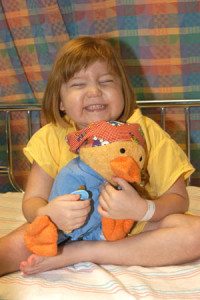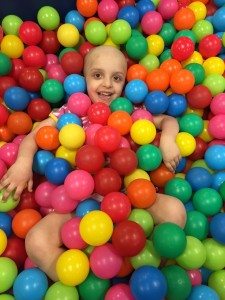
This month we will continue to discuss the different chapters from our digital Parent-to-Parent Guide. Following the Support Plan featured in last month’s e-newsletter is the Home Plan.
Home life can be difficult to maintain and regulate after your child has been diagnosed. Having a home plan that you and your family can implement on a daily basis can make your life feel a little less complicated.
To start, it’s important to have a medical home plan. Keep useful phone numbers, your child’s latest blood counts and medication lists on hand for when you need them. This can make emergency calls less stressful when calling the hospital or doctor. We recommend you laminate the Emergency Numbers sheet attached to the end of the Home Plan PDF so you can write on and wipe off weekly blood counts.
Although it may seem impossible, try to keep life at home as regular as possible. Encourage your child to go to school and have play dates as long as they are well enough. This goes for siblings too.
It is an unfortunate reality of childhood cancer, but typically the entire family is affected. Try to keep their lives as normal as possible as well. Ask for help from friends and family to make sure that everyone can continue with their after school activities and sports. Try to make sure that everyone knows what the weekly schedule will be – children thrive on routine. Below are ways that siblings can live a somewhat normal life.
Team up: If you are a two-parent team, make sure that the same parent isn’t always at the hospital. It’s important that siblings spend time with you to minimize feelings of neglect.
Educate the family about basic cancer facts: When every family member is well educated about cancer and cancer treatment, talking about feelings can be easier. Feelings can be confusing for siblings and it’s more difficult for them to cope at times. Be sure to stress to everyone in your family that cancer is not contagious and that nobody caused your child to have cancer. Most importantly, explain that this is nobody’s fault.
Everyone needs a role: Give siblings a role in taking care of their sick brother or sister. Whether it’s being in charge of “cheering up” the unwell sibling or making cards during hospital days, it’s important that everyone feels they are needed have defined roles.
Catch your children doing something good: Recognize, acknowledge and thank your children when they make an effort to raise their sibling’s spirits. Celebrate small victories and occasions together as a family.
Talk about feelings: Encourage your children to express their feelings, even those of jealousy or resentment toward their sick brother or sister. Explain that although it is normal to experience those feelings, their actions toward the sick sibling need to be considerate and thoughtful. The more time adults take to understand the difficulties the children are facing, the better.
Another important aspect of an effective Home Plan is nutrition. It’s likely that your child’s appetite will change during treatment. Drastic changes in cravings and appetite are normal. Your doctor may encourage you to allow your child to eat whatever appeals them. “Most of all, try not to stress too much. If all they want to eat is Pringles or Cheetos, give it to them and remember that this too shall pass,” said Natalie, parent of a pediatric cancer patient. Try not to worry too much, if your child’s weight begins to drop slightly. Your doctor will suggest different options to supplement their diet. You can help your child by encouraging them to eat when they feel like it, and slipping calories into food when they don’t!
There are so many stressors for families after a child has been diagnosed. Hopefully these tips, your Chemo Duck companion and the Home Plan document will help as you navigate through this journey.

